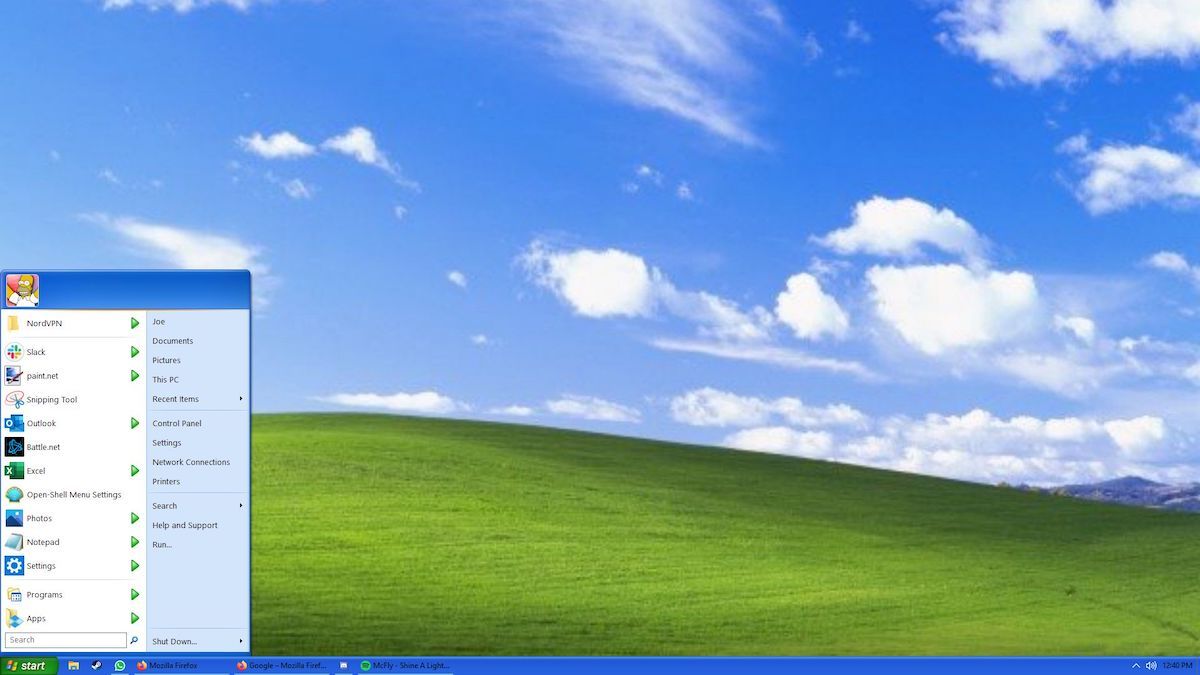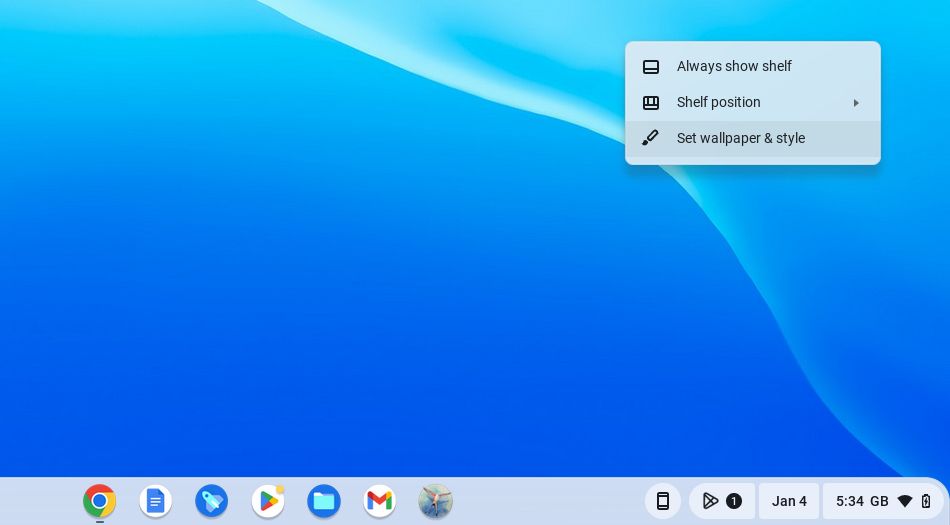Why Is the Windows Interface So Disjointed After These Years
Uniform consistency may not be the pipe dream of an everyday Windows user, but it remains a point of contention for power users. Despite Microsoft’s attempts at unification, the fragmented and inconsistent user interface has plagued the operating system since the launch of Windows 95 and continues with Windows 11. We explore the evolution of Windows UI, issues contributing to the fragmented user interface, and how competitors have demonstrated a more cohesive approach.
Windows' Consistently Inconsistent UI Evolution
The initial Windows design inconsistencies can be traced back to Windows 95. While the successor to Windows 3.1 introduced a more cohesive design language with the Start menu and taskbar, it also marked the beginning of Microsoft's struggle with design inconsistencies due to the need to support legacy apps.

Windows XP, with its visually unified experience, brought Microsoft’s enterprise and consumer line of operating systems under one roof. While security was the biggest concern with XP, the visual overhaul didn't translate across the system, creating inconsistencies.
With Windows Vista, Microsoft updated the look and feel of Windows with a sleek, translucent design. However, some legacy applications and dialog boxes retained the XP-style appearance, including the font, control styles, and more. This visual clash continued with successive Windows upgrades, creating a fragmented user experience.

While hardware limitations slowed Vista’s adoption, the Aero design language found success in Windows 7, offering a familiar experience with better performance, wider hardware capability, and more personalization options.

Windows 8, with its disruptive modern UI (Metro), was the biggest culprit. Designed with a focus on a touch-first interface, the Metro UI received a negative reception from traditional PC users accustomed to keyboard and mouse inputs, and created a stark contrast between legacy and new apps.

Windows 10 aimed to rectify this by fixing most issues, but some design disparities remained. Despite the introduction of the Fluent Design System and Universal Windows Platforms (UWP) app, the design and functionality of the Start menu were inconsistent with the Modern UI.
Competitors Get It Right
In contrast, other operating systems like macOS have prioritized a more unified and consistent UI. Since its transition from the classic Mac OS to Mac OS X (now macOS), which saw significant design changes, macOS has kept its core design principle intact without compromising modern aesthetics.

Although macOS is not entirely free of inconsistencies, it has fewer visual disparities compared to Windows. This is partly facilitated by the fact that macOS has been developed and tuned to work only with Apple hardware.
But even many Linux distributions, with their high degree of customization, adhere to specific design guidelines to prioritize a cohesive user experience. Other lightweight operating systems like ChromeOS, with a minimalist design and focus on web applications, offer a more unified experience across different apps and system components.

Windows has made significant UI changes with each major release. Some of these changes are driven by external factors, and some for the sake of innovation. For instance, the rise of touchscreen devices in 2010 prompted Microsoft to redesign its popular operating system with Metro UI for a unified experience across devices. It was, however, a massive gamble that didn't pay off.
Microsoft Still Making the Same Mistakes
Windows 11, built on the success of its predecessor, offers a more streamlined and modern user interface, but some inconsistencies persist. Some of these are part of its transition phase, while others seem like an unfinished job.

Apart from having way too much going on, the new context menu is not consistent throughout the OS and is plagued by rendering issues with certain applications. The improved dark mode now supports more apps, but it isn’t without problems. When activated, it may not apply uniformly across all the apps, especially when the app is open or minimized.
You’ll also find multiple instances of design inconsistencies, with some parts of the system looking like Windows 10 and even Windows 7. For instance, the advanced storage settings and the Windows Recovery Environment retain the old Windows 10 design elements. Dig a little deeper, and you’ll find Windows 7 design elements for File Explorer options, system restore, and Command Prompt.

What's more, Windows 11 still retains both the legacy Control Panel and the Settings app, creating a dual-interface issue. This, however, is expected to be temporary as Microsoft will phase out the older components as more options are transitioned to the new Settings app.
Core apps like the Device Manager and other administrative tools look like they have been repainted to look new with rounded corners. Since these tools cater to advanced users and IT professionals, a comprehensive design overhaul seems unlikely in the near future.
Navigating the Challenges of Legacy and Compatibility
Microsoft’s commitment to backward compatibility, unclear transition points for older technologies, such as its old UX frameworks, and a much larger ecosystem of legacy apps are among the many factors contributing to Windows' fragmented user experience.
Responding to a query on Twitter (now X) in 2013, Mikhail Parakhin, a Microsoft executive, noted that while WinUI 3 is their preferred way to build a premier, advanced UI, they’ll continue supporting and developing popular frameworks that people currently use.
While different apps with different requirements may prefer different frameworks, the coexistence and continued development of multiple UI frameworks can contribute to visual disparities even among native apps. This is a complex issue with no easy solution. Although some blame lies with external factors, Microsoft’s inability to align its modern native apps with its own UI guidelines raises concerns about its commitment to a cohesive design vision.
The Future of Windows UI
While Microsoft has made strides towards a more unified experience with Windows 11, Fluent Design, and Project Reunion, its iterative approach to Windows development means more inconsistencies as new UI elements are added. This is further complicated by its legacy of backward compatibility, the needs of enterprise users, and the scale of the Windows ecosystem.
Microsoft is addressing many of the UI consistency issues with newer updates, but at a slower pace. While it is aggressively prioritizing AI in Windows 11 by adding new copilot features, a dedicated update addressing the operating system's UI inconsistencies can help deliver a unified Windows experience. This would create a balance between Copilot additions and core functional improvements to the operating system.
The above is the detailed content of Why Is the Windows Interface So Disjointed After These Years. For more information, please follow other related articles on the PHP Chinese website!

Hot AI Tools

Undresser.AI Undress
AI-powered app for creating realistic nude photos

AI Clothes Remover
Online AI tool for removing clothes from photos.

Undress AI Tool
Undress images for free

Clothoff.io
AI clothes remover

Video Face Swap
Swap faces in any video effortlessly with our completely free AI face swap tool!

Hot Article

Hot Tools

Notepad++7.3.1
Easy-to-use and free code editor

SublimeText3 Chinese version
Chinese version, very easy to use

Zend Studio 13.0.1
Powerful PHP integrated development environment

Dreamweaver CS6
Visual web development tools

SublimeText3 Mac version
God-level code editing software (SublimeText3)

Hot Topics
 1664
1664
 14
14
 1423
1423
 52
52
 1317
1317
 25
25
 1268
1268
 29
29
 1243
1243
 24
24
 Windows kb5054979 update information Update content list
Apr 15, 2025 pm 05:36 PM
Windows kb5054979 update information Update content list
Apr 15, 2025 pm 05:36 PM
KB5054979 is a cumulative security update released on March 27, 2025, for Windows 11 version 24H2. It targets .NET Framework versions 3.5 and 4.8.1, enhancing security and overall stability. Notably, the update addresses an issue with file and directory operations on UNC shares using System.IO APIs. Two installation methods are provided: one through Windows Settings by checking for updates under Windows Update, and the other via a manual download from the Microsoft Update Catalog.
 Nanoleaf Wants to Change How You Charge Your Tech
Apr 17, 2025 am 01:03 AM
Nanoleaf Wants to Change How You Charge Your Tech
Apr 17, 2025 am 01:03 AM
Nanoleaf's Pegboard Desk Dock: A Stylish and Functional Desk Organizer Tired of the same old charging setup? Nanoleaf's new Pegboard Desk Dock offers a stylish and functional alternative. This multifunctional desk accessory boasts 32 full-color RGB
 Got an AMD CPU and Aren't Using PBO? You're Missing Out
Apr 12, 2025 pm 09:02 PM
Got an AMD CPU and Aren't Using PBO? You're Missing Out
Apr 12, 2025 pm 09:02 PM
Unlocking Ryzen's Potential: A Simple Guide to Precision Boost Overdrive (PBO) Overclocking your new PC can seem daunting. While performance gains might feel elusive, leaving potential untapped is even less appealing. Fortunately, AMD Ryzen processo
 ASUS' ROG Zephyrus G14 OLED Gaming Laptop Is $300 Off
Apr 16, 2025 am 03:01 AM
ASUS' ROG Zephyrus G14 OLED Gaming Laptop Is $300 Off
Apr 16, 2025 am 03:01 AM
ASUS ROG Zephyrus G14 Esports Laptop Special Offer! Buy ASUS ROG Zephyrus G14 Esports Laptop now and enjoy a $300 offer! Original price is $1999, current price is only $1699! Enjoy immersive gaming experience anytime, anywhere, or use it as a reliable portable workstation. Best Buy currently offers offers on this 2024 14-inch ASUS ROG Zephyrus G14 e-sports laptop. Its powerful configuration and performance are impressive. This ASUS ROG Zephyrus G14 e-sports laptop costs 16 on Best Buy
 How to Use Windows 11 as a Bluetooth Audio Receiver
Apr 15, 2025 am 03:01 AM
How to Use Windows 11 as a Bluetooth Audio Receiver
Apr 15, 2025 am 03:01 AM
Turn your Windows 11 PC into a Bluetooth speaker and enjoy your favorite music from your phone! This guide shows you how to easily connect your iPhone or Android device to your computer for audio playback. Step 1: Pair Your Bluetooth Device First, pa
 5 Hidden Windows Features You Should Be Using
Apr 16, 2025 am 12:57 AM
5 Hidden Windows Features You Should Be Using
Apr 16, 2025 am 12:57 AM
Unlock Hidden Windows Features for a Smoother Experience! Discover surprisingly useful Windows functionalities that can significantly enhance your computing experience. Even seasoned Windows users might find some new tricks here. Dynamic Lock: Auto
 Microsoft Might Finally Fix Windows 11's Start Menu
Apr 10, 2025 pm 12:07 PM
Microsoft Might Finally Fix Windows 11's Start Menu
Apr 10, 2025 pm 12:07 PM
Windows 11's Start Menu Gets a Much-Needed Overhaul Microsoft's Windows 11 Start menu, initially criticized for its less-than-intuitive app access, is undergoing a significant redesign. Early testing reveals a vastly improved user experience. The up
 You Can Get The Razer Basilisk V3 Pro Mouse for 39% off
Apr 09, 2025 am 03:01 AM
You Can Get The Razer Basilisk V3 Pro Mouse for 39% off
Apr 09, 2025 am 03:01 AM
##### Razer Basilisk V3 Pro: High-performance wireless gaming mouse The Razer Basilisk V3 Pro is a high-performance wireless gaming mouse with high customization (11 programmable buttons, Chroma RGB) and versatile connectivity. It has excellent sensors, durable switches and extra long battery life. If you are a gamer looking for a high-quality wireless mouse and need excellent customization options, now is a great time to buy the Razer Basilisk V3 Pro. The promotion cuts prices by 39% and has limited promotion periods. This mouse is larger, 5.11 inches long and 2 inches wide




